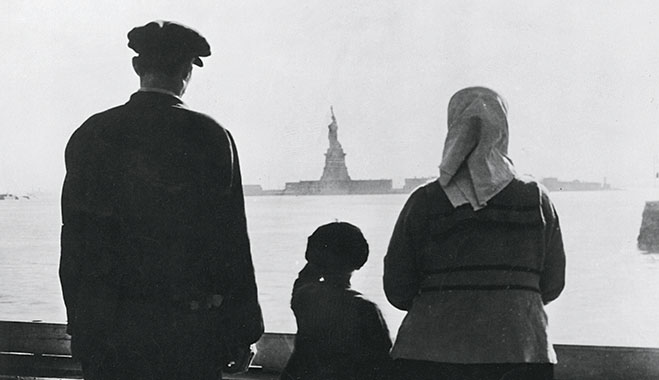
1790
With its wide-open spaces, America encouraged all-comers in its earliest years. Practically anybody – including criminals escaping the English hangman – could step ashore and start again. Approaching the end of the 17th century, no less than 75 percent of the population was foreign-born. Then in 1790, in a complete reversal, Congress banned anybody not European or of Caucasian stock. And nearly 100 years after that, the Chinese were specifically excluded.
1948
After 150 years of racist immigration laws, America opened its borders again, this time to European refugees of the Second World War. The Displaced Persons Act recognised what was happening – one of the biggest legal immigration floods in history. Over one million refugees poured into the US between 1941 and 1950. Designed as a symbol of freedom, the Statue of Liberty was the first landmark many immigrants saw when nearing US soil.
1993
Across the pond, the first Colombians began arriving in Spain to escape years of armed conflict in a drug-ridden nation. Numbers were estimated at just 7,000 – but it was the start of a flood. Shortly after 2000, there were about 250,000 Colombians in Spain, the first choice for many as a safe haven. As in other overrun countries, many Spanish people complained that poor illegal – and legal – migrants drove down wages because they took any job going.
1996
Alarmed by the large amount of Mexicans finding their way through porous borders, America made an effort to get tough again. The number of border control agencies was doubled, fences were erected in the most trafficked areas, and hefty penalties were applied to anybody harbouring or aiding illegal immigrants. Yet still these ‘border bandits’ got through, usually guided by people smugglers that helped in return for hefty fees.
2000
With perhaps 50 million illegal immigrants, India has one of the biggest global immigration problems. It’s estimated that at least 10 million Bangladeshis alone crossed the border during their country’s so-called Liberation War. The price of illegal entry is cheap, around $30 for the round trip into Bengal, and as low as $3 for false identities. In desperation India started building a 2,500-mile long, nearly 12-feet high fence along the border to keep Bangladeshis out.
2007
There’s nothing new about illegal immigration in sub-Saharan Africa. Some 44,000 Congolese were kicked out of Angola along with 400,000 other unofficial residents who had fled civil war in the Democratic Republic of Congo. In this as in other wholesale expulsions, Angola was only exercising its rights – most countries claim the freedom to decide if an illegal immigrant can stay or not. If the latter, it’s usually because they are judged to be genuine refugees.
2012
America faced a more complex immigration problem as Central Americans fled the most corrupt nations in droves. At least 90,000 non-Mexicans were caught in 2012 alone. Since then however, the number of Mexicans arrested by the US Border Patrol has been dropping rapidly from an average of around one million a year. A concern remains as there has been an increase in the discovery of unaccompanied alien children making their way from Central America.
2015
As the thousands of Rohingyan people crossing the Andaman Sea near Malaysia in early May would attest, the lure of a better life elsewhere is a powerful incentive to risk one’s life. They are some of the roughly 750,000 systematically oppressed, ghetto-ised Muslims trapped in Buddhist Myanmar with virtually no legal rights. According to the UN, at least 100,000 Rohingyans fled the country by sea in the last three years.


